‘Tis the season of excess and naughty indulgences. However, you don’t have to ruin your diet. Here are 25 healthy holiday recipes that are deliciously seasonal and celebratory.
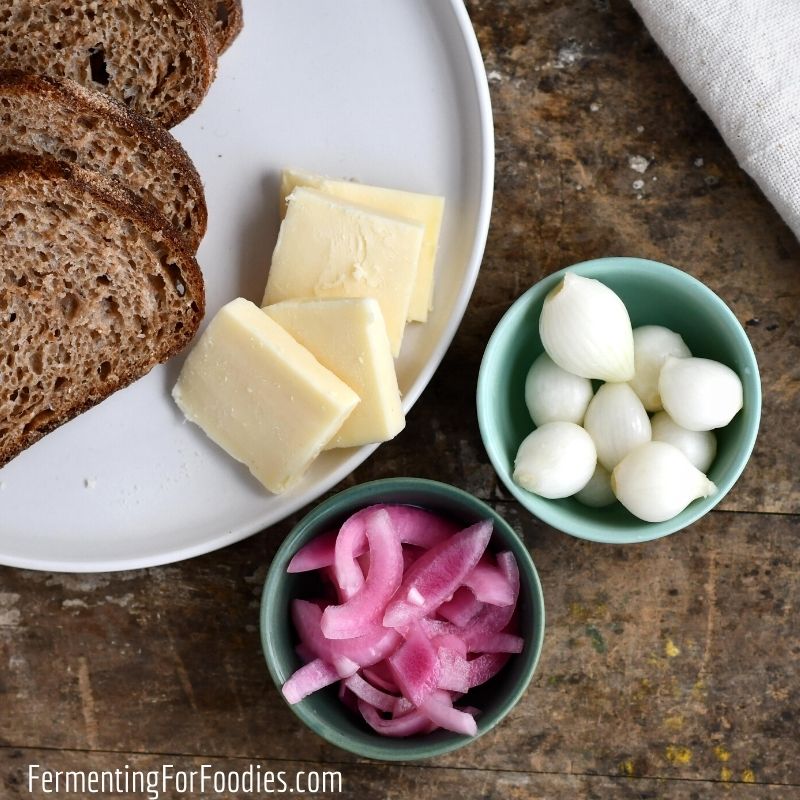
This round up of healthy holiday recipes are designed to feed your microbiome. They are chosen with a focus on gut health as well as flavor. Perfect for all your holiday parties!
Healthy Holiday Appies
Appetizers and party food are a big part of the holiday season. They are also a great way to feature homemade fermented foods! Perfect for a dose of probiotics.
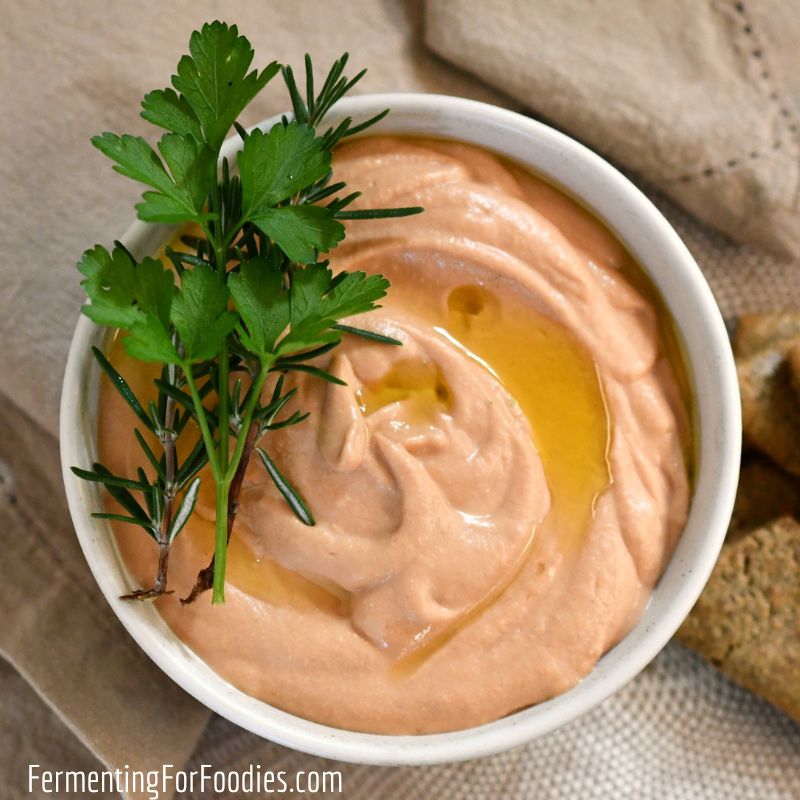
- Pickled cocktail onions are easy to make and so much tastier than store-bought.
- Giardiniera is an Italian-style mixed vegetable pickle that is perfect with charcuterie.
- Skip buying fancy cheeses and make your own herb and garlic cheese spread. Bonus points for using homemade kefir or yogurt cheese!
- Homemade tzatziki is a naturally probiotic (yogurt!) and lower-in-fat dip. It’s a delicious and healthy alternative to the usual vegetable dips.
- Hummus is a staple at most parties. Did you know it’s also REALLY easy and affordable to make your own? Not only that, you get to avoid all the extra fat, preservatives, and whatever else might be in the tub of store-bought hummus.
- Salt-brined pickled eggs are high in protein and probiotic. They also make the most amazing deviled eggs.
- No charcuterie platter would be complete without an interesting condiment or two. This healthy apple chutney is refined sugar-free and full of flavor.
- Celebrate red, white, and green with a Caprese salad on a toothpick.
- Tofu misozuke is a flavorful and probiotic spread.
Load up on Vegetables
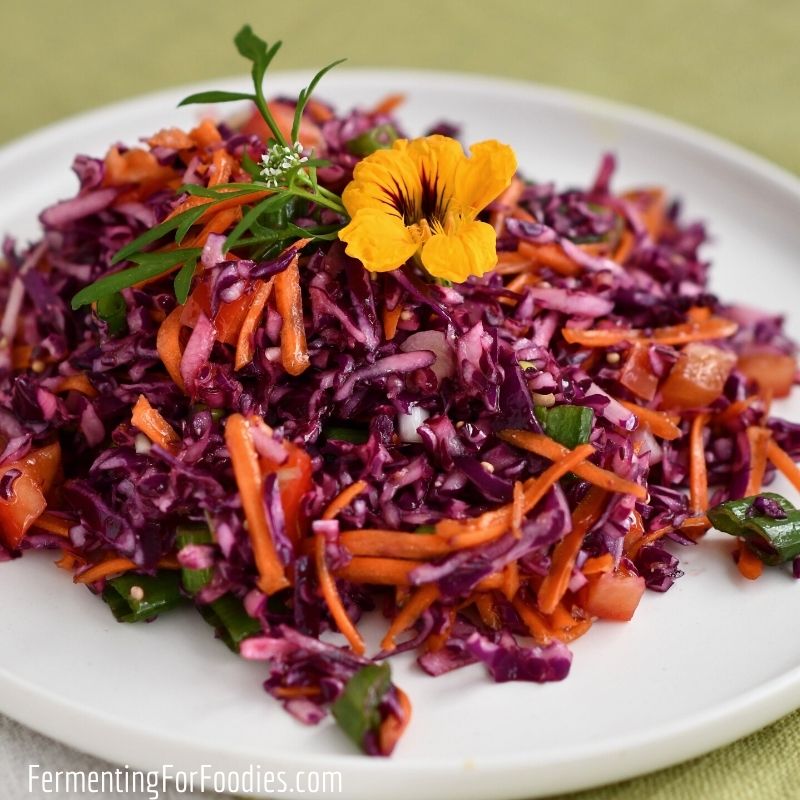
A healthy diet should be made up of about 50% fruits and vegetables. They are high in fiber and full of vitamins and minerals. Luckily there are many delicious recipes for salads and vegetable sides.
- Make a colorful rainbow coleslaw.
- Fermented Brussel sprouts are perfect for anyone who doesn’t typically enjoy them. Serve them sliced up with a drizzle of balsamic vinegar.
- This creamy carrot apple salad uses yogurt for a low-fat and probiotic dressing.
- A big green salad is a great way to pack in a ton of fresh vegetables.
- Sauté greens, like kale, with a few cloves of finely diced garlic and a pinch of salt. It’s amazingly easy and delicious!
Prebiotic side dishes
Instead of reaching for white bread and fluffy mashed potatoes, try to include a few side dishes that are prebiotic.
Prebiotic foods are high fiber foods (whole grains or resistant starches) that feed the healthy bacteria in your digestive system. They also help regulate blood sugar levels and leave you feeling full and satisfied.
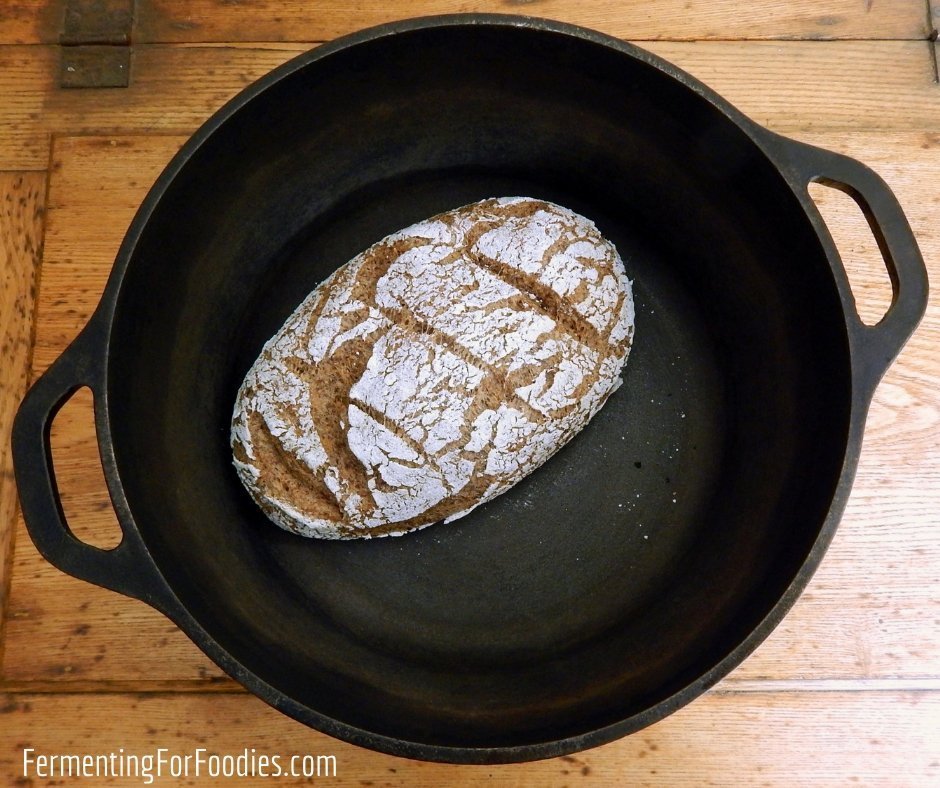
Here are a few side dishes that are packed with prebiotics:
- This vegan and gluten-free sourdough bread is high in fiber, rustic, and delicious.
- Oven-roasted Jerusalem artichokes (sunchokes) are a prebiotic alternative to potatoes.
- Did you know that cooked and cooled potatoes are prebiotic? It’s the perfect reason to enjoy a winter vegetable potato salad.
- Wild rice salad with garlic roasted vegetables is delicious as a side dish or a vegan main.
- The onion family is a good source of prebiotics. Make garlicky leeks in olive oil.
- Oats are great prebiotic grain. Perfect for a healthy alternative to rice in risotto.
Naturally Sweet Treats
Sweet treats are a staple of the holiday season. However, they don’t have to be sugar-ladened and cloyingly sweet. Here are a few recipes that are naturally sweetened with fruit!
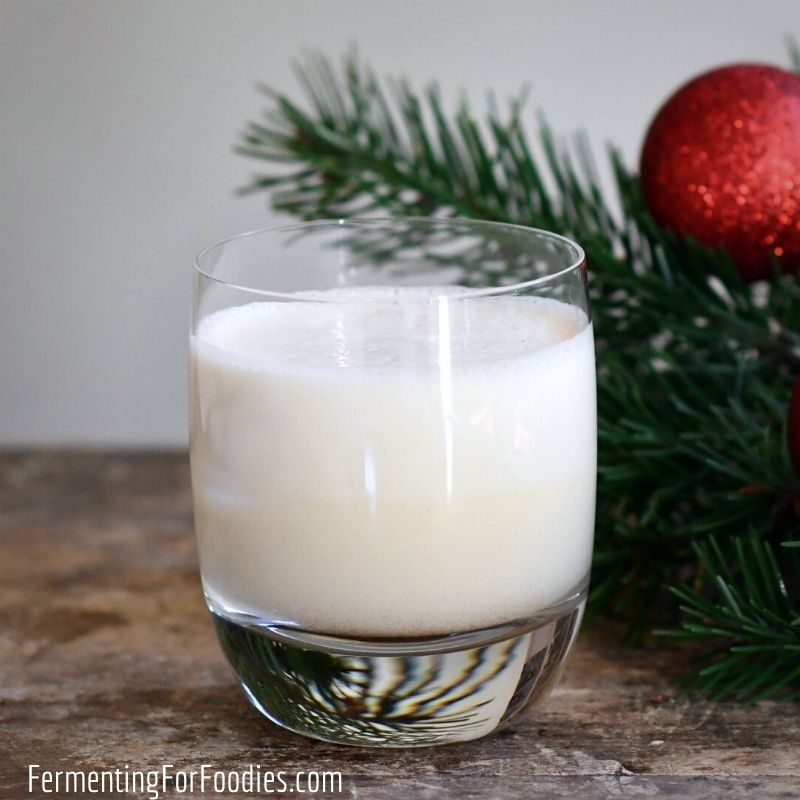
- Frothy whipped eggnog is a favorite holiday treat. And it only takes 5 minutes to make!
- Mincemeat is a fruit-filled holiday staple that is most often eaten as a tart filling. However, I enjoy mincemeat as a delicious accompaniment to a cheese board or as a filling for a shortbread thumbprint cookie.
- These Grinch fruit kebabs are just made with fruit!
- Chocolate avocado mousse is a date-sweetened indulgence.
- This cream cheese rugelach has a delicious apple, raisin, and walnut filling.


Dear Miss Emillie, I enjoy reading your website. I am 81 years bold and remember helping my father make sauerkraut to be enjoyed during the long winters here in northern Illinois. He used only salt to turn the shredded cabbage into sauerkraut. If anyone is interested in making a large quantity of sauerkraut, here is what we did. We used an oak barrel (an old whiskey barrel, I don’t know how he obtained the barrel). When the barrel was new to him, he would spend days cleaning and scrubbing it, first with salt, then rinsing and rinsing and letting it dry, and then filling it with water and allowing the wood to absorbe the water. We would ferment shredded cabbage and whole heads. First clean the cabbage, peel off the outer leaves, rinse them if needed, lay them aside. Shred some cabbage and those that were to be fermented whole, we would ream out the core, leaving only enough to keep the head togehter and fill it with salt. Set those aside and wait until the cabbage head would beging to sweat. then, lay the entact leaves on the bottom of the barrel, then about 3 to 4 inches of shredded cabbage, sprinkle with salt, then the heads, shprinkle with salt, top with shredded cabbage. Repeat until all the cabbage was used. Then, place a weight on top of the cabbage, he used a round piece of oak, place a clean 100% cotton cloth on top of the weight. then cover the whole barrel with another sheet of cotton fabric and tie it down with rope around the barrel. Leave it for about 2 weeks, or until it begins to smell. Uncover, scoop off the scum that forms, this is normal and not in any way dangerous, remember it is only cabbage and salt. Rinse fhte weight and the cloth, rewrap. This cleaning process is necessarily performed every week or the whole batch will go bad. Believe me when I say that this is better done anywhere but in the house because it will smell so bad that you will think something crawled into your home and died. However, when the smell gets to that point, the fermentation process is almost finished. One day you will think, “I can’t stand this anymore.” the next morning, the smell will be gone, never to return. Why, I don’t know. From that point on, every time you want sauerkraut, you will need to uncover, remove the scum, take out what you want to cook, rinse, rewrap and tie down the cloth. If you do not remove the scume before reaching into the barrel or other container, the scum will be transferred into the sauerkraut and will ruin the whole batch. How do I know this, one of my aunts did just that. The next time we wanted sauerkraut, the whole baatch was ruined and we needed to throw it out. Not a happy winter. thank you for allowing me to write this and God Bless you and your family.
Hi Catherine, Thank you for sharing your story. It is interesting to learn how you make sauerkraut as a child, by the barrel full! Wishing you all the best this holiday season. Cheers, Emillie